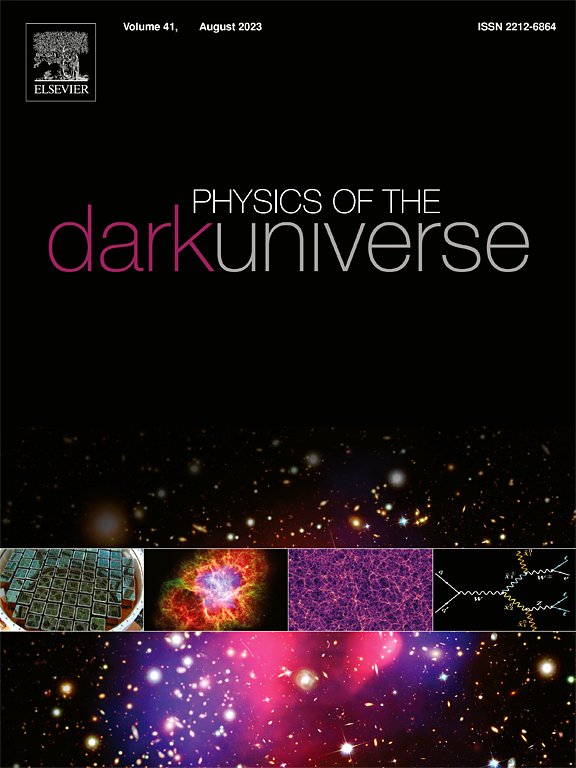原始宇宙中再加热的非线性动力学:来自四次模型的见解
IF 6.4
2区 物理与天体物理
Q1 ASTRONOMY & ASTROPHYSICS
引用次数: 0
摘要
我们研究了在膨胀和再加热过程中自发衰减为辐射的固有不稳定膨胀场的动力学。为了模拟这一点,我们制定了一组耦合速率方程,描述了膨胀能量密度的消耗和辐射的同时积累,确保了严格的能量守恒。这些进一步与产生的辐射的反反应的弗里德曼方程耦合。这些耦合微分方程组的强非线性排除了任何解析解。从慢滚初始条件开始,并允许~ 60倍的膨胀,数值计算显示,即使在膨胀期间,辐射也开始积累。一旦暴胀结束,宇宙平稳地过渡到再加热阶段,推动辐射能量密度的有效增长,达到最大值ρr=5.2019×1050GeV4,再加热温度Tr=1.9618×1012 GeV。重要的是,宇宙实现了一个优雅的退出,满足了成功再加热的科夫曼-伊准则,确保了暴胀能量几乎完全转移到辐射中。这为一个热的、辐射主导的时代奠定了基础,与观测到的早期宇宙的热历史一致。虽然这个框架为优雅的退出机制提供了一个健壮的动力学,但预测的张量-标量比r=0.2609,超过了BICEP/Keck和Planck的当前界限。该值由膨胀势的四次形状产生,与四次耦合无关。协调体面的退出与CMB约束,将需要另一种通胀潜力。本文章由计算机程序翻译,如有差异,请以英文原文为准。
Nonlinear dynamics of reheating in the primordial universe: Insights from the quartic model
We study the dynamics of the inherently unstable inflaton field that spontaneously decays into radiation during both inflation and reheating. To model this, we formulate a set of coupled rate equations describing the depletion of inflaton energy density and the concurrent buildup of radiation, ensuring strict energy conservation. These are further coupled with the Friedmann equation with backreaction from the produced radiation. Strong nonlinearities in these coupled set of differential equations preclude any analytical solution. Starting with slow-roll initial conditions and allowing for e-folds of inflation, numerical computation reveals that radiation begins to accumulate even during inflation. Once inflation ends, the Universe transitions smoothly to a reheating phase driving an efficient growth in radiation energy density, reaching a maximum of , with a reheating temperature of GeV. Importantly, the Universe achieves a graceful exit, satisfying the Kofman-Yi criterion for successful reheating, ensuring a nearly complete transfer of inflaton energy into radiation. This sets the stage for a hot, radiation-dominated epoch, aligning with the observed thermal history of the early Universe. While this framework provides a robust dynamics for the graceful exit mechanism, the predicted tensor-to-scalar ratio, , exceeds current bounds from BICEP/Keck and Planck. This value arises from the quartic shape of the inflaton potential and is independent of the quartic coupling. Reconciling the graceful exit with CMB constraints would require alternative inflaton potentials.
求助全文
通过发布文献求助,成功后即可免费获取论文全文。
去求助
来源期刊

Physics of the Dark Universe
ASTRONOMY & ASTROPHYSICS-
CiteScore
9.60
自引率
7.30%
发文量
118
审稿时长
61 days
期刊介绍:
Physics of the Dark Universe is an innovative online-only journal that offers rapid publication of peer-reviewed, original research articles considered of high scientific impact.
The journal is focused on the understanding of Dark Matter, Dark Energy, Early Universe, gravitational waves and neutrinos, covering all theoretical, experimental and phenomenological aspects.
 求助内容:
求助内容: 应助结果提醒方式:
应助结果提醒方式:


